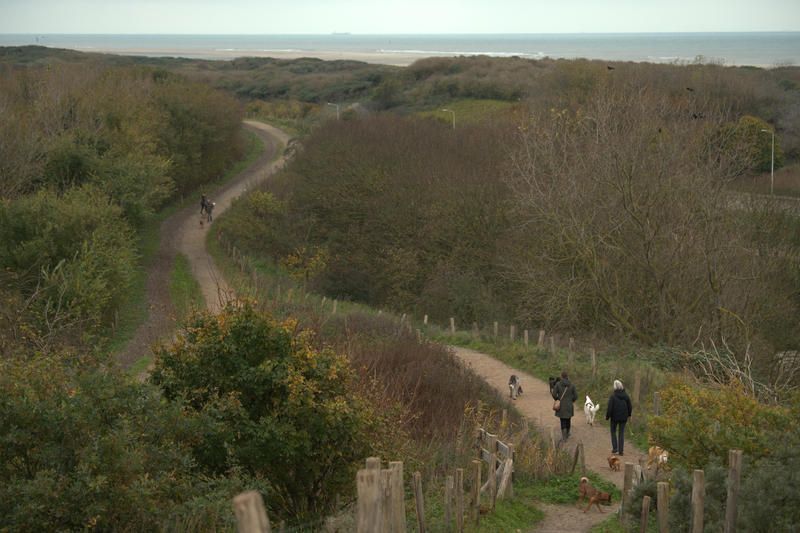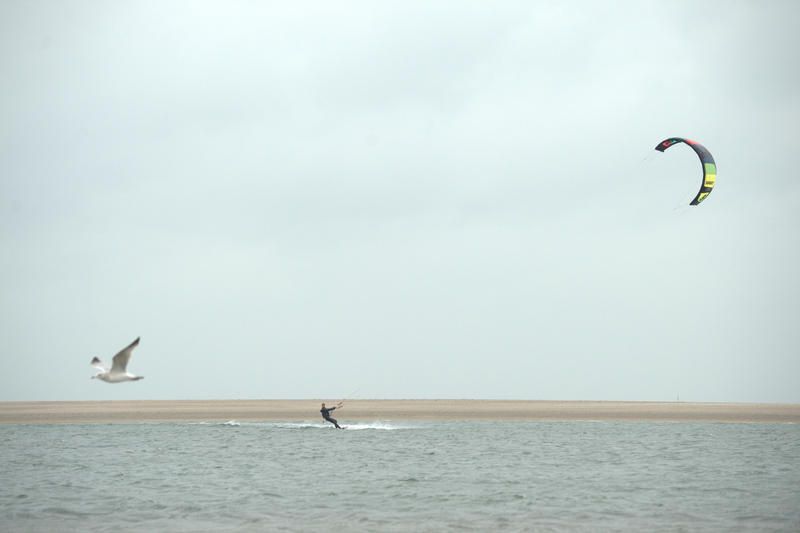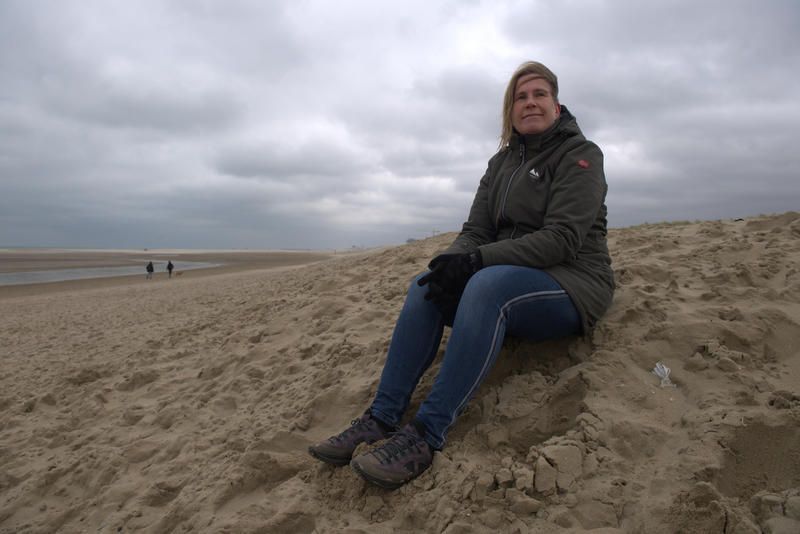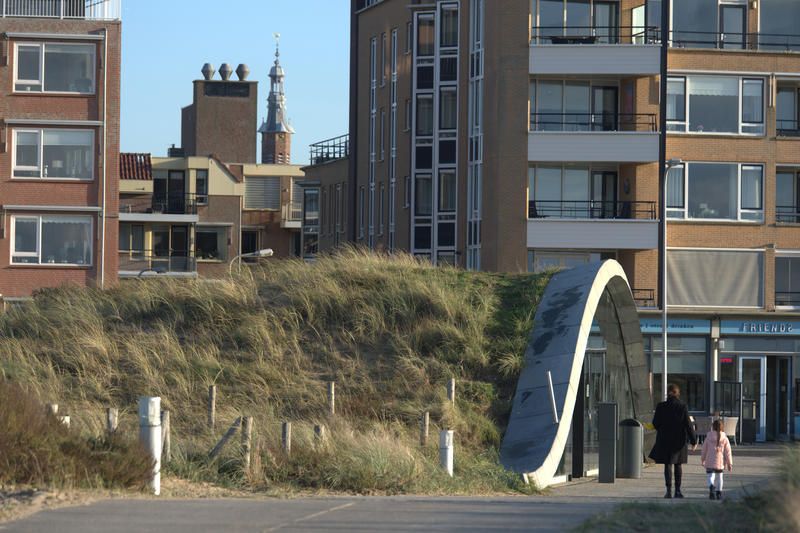The Netherlands is a coastal nation and faces similar threats to Louisiana, like rising seas, stronger storms and a sinking coast. Over the past thousand years, the Dutch have built giant floodwalls and levees to protect them from the North Sea, just like officials continue to do in Louisiana.
But climate change is bringing new threats, and the Dutch are trying some unusual approaches. They are rebuilding land with the power of nature, using some tools that we could use here in Louisiana.
On a freezing cold, grey November day on the coast, waves from the North Sea crash on the shore. Yet kite-surfers find the weather perfectly acceptable. Several of them battle the wind in dry suits in a small lagoon where the waves are smaller. It’s a favored location for the sport. But over the next several decades this whole beach will wash away, just like it was engineered to do.
The “Zandmotor,” Dutch for “sand motor,” was devised by the Rijkswaterstaat, the Dutch equivalent of the Army Corps, and the whole idea is that the natural current from the sea will wash the sand away and redistribute it along miles of beach in both directions, rebuilding them.
About a decade ago workers used big machinery to dredge and pump about 570 million square feet of sand from the bottom of the North Sea and dump it here. That’s enough to fill the Superdome six times.
Carola van Gelder-Maas, senior advisor at the Rijkswaterstaat, says the project so far has been successful, “Every time you put sand on the beach or on the shore face, it will help to keep up with sea level rise and will help protect the Netherlands.”
Just like in Louisiana, the Dutch coast is the first line of defense against sea level rise and storms, and it’s eroding. Every five years officials dredge sand from the North Sea to dump on the coast, which is expensive. The idea with the sand motor is to let nature do the work.
It cost about $53 million and will be spread over 13 miles of beach over the next 40 years.
The Coastal Restoration and Protection Authority is doing similar projects in Louisiana, such as rebuilding barrier islands like Queen Bess and the Caminada Headlands. But it sometimes costs four times as much and does not harness natural forces, like waves. State officials say they plan to do more of this — but couldn’t give any examples.
Dale Morris is with the Water Institute of the Gulf and a former economist for the Dutch embassy. After Hurricane Katrina, he took a group of Louisiana officials to the Netherlands for inspiration in planning what is now the greater New Orleans Hurricane & Storm Damage Risk Reduction System. Morris points out that the survival of the Dutch is contingent on engineering: “The Dutch people don't live there unless they have intervened in the natural functions of the landscape.”
It is true, engineers have built at least 20 percent of the country over the past 400 years through a process called “poldering.” Engineers would build a ring levee into bays or the north sea, then drain it, remediate it, and turn it into farmland (or neighborhoods.)
They have a saying, "God created the world but the Dutch created the Netherlands.” That has required a lot of experimentation.
“They don't mind making mistakes with projects like this.” Morris says that, to an extent, the Dutch are not averse to taking risks, “of course, they don't plan to make them, but they're more willing to undertake this experiment, this project, and see what they can learn from it.”
That is as much a result of creativity as it is of desperation. Much of the country is coastal and about a quarter of it is below sea level. Experimentation is part of the culture of the Netherlands.
Officials are not just experimenting with different restoration methods, they are also handing over more control to local governments to come up with their own solutions.
An example of that is in the little coastal town of Katwijk, about twenty miles north of the sand motor, where it used to flood a lot. Big waves would roll in from the North Sea, filling the downtown. It’s usually pretty quiet, except in the summer when a lot of tourists visit.
A few years ago the government offered the community $70 million to help protect the city from coastal flooding.
Johan Remijn is with the regional water control board. He says normally, “The government makes a plan and a design, and they take the best plan and say ‘here’s the best plan, we will do this for you, you should be very glad.’ But here it was the other way around.”
Officials held a series of community meetings where designers had participants play a colorful board game that represented pieces of the town and they came up with a plan to both protect the people and create more parking during busy tourist times — a sand dune parking garage.
Residents Bas and Ina Beelen take a stroll along the new dune. They have lived here all of their lives, and watched as the beach got torn up and rebuilt. Ina Beelen says in the beginning they were skeptical, “We thought, 'What could it be?'”
But when it was completed, “fantastic! Very nice. Cars below. We are very satisfied.”
Underneath the sand dune is a 660-space parking lot that is designed to flood. It hasn’t yet.
Engineers built the dune up so that it stands about 24 feet above sea level. It looks like a normal beach, except for two mounds on each side that people drive into. The Beelens say they feel safer now.
The townspeople thought the planning process was a bit odd, but overall, Remjin, says everyone is happy with the results, and time will tell how well it works. “It was not a linear process, but in the end, everybody was positive.”
The sun sets on the futuristic landscape as a little girl rides past on a pony and two older ladies carry their shopping bags and disappear into the sand dune, down to their car.




